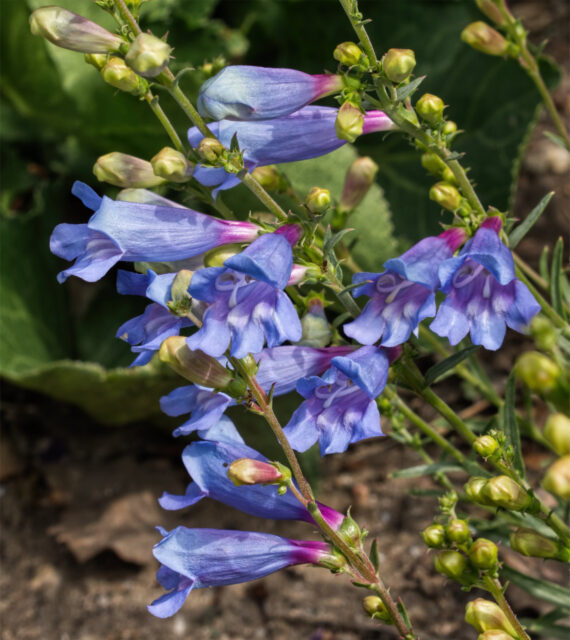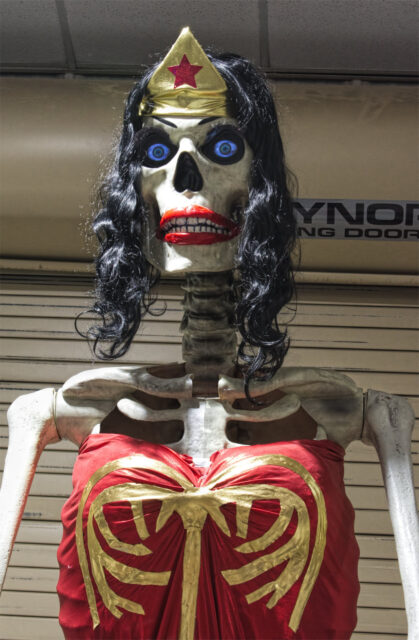I spent last Saturday morning at the local comics1 convention, and grabbed a few pictures.
Author: Don
442nd Animation
I recently received this message from my nephew the animator. I post it here for anyone who might be interested.
–Don
*****
Hello Friends, Family & Supporters,
It is Brad Uyeda Jr., and I am finally done writing and ready to direct of my animated feature film, Purple Heart for Effect.
When Japanese Americans’ eligibility for military service was restored in early 1943, the number who chose to enlist out of the concentration camps chose to do so despite their family’s continued incarceration. Most became members of the segregated 442nd Regimental Combat Team, which fought in some of the toughest battles on the European front and became one of the most decorated units in the war. Others joined intelligence units in the Pacific as Japanese language specialists whose skills in interrogation and translation contributed greatly to Allied successes.
As I began to think about this I realized that my own children will never know who these family members are other than the photographs on the walls. I want my family and every extension of it to know the history behind the name and names we’ve given our offspring. So when covid happened I decided to spend the time in locked down to write the story. I knew a long time ago that I was going to tell it I just wasn’t sure when that would be…until now.
Artist, Father, Grandfather…a Soldier.
Stripped of his freedom in 1944, Mas, my grandfather, a Japanese American enlists in a segregated unit of the U.S. army to prove his allegiance to his country during World War 2 and in the process heroically saving a lost battalion in the mountains of France. Like so many who fought and survived in WW2 they really didn’t talk about their experiences. Wounded in battle and lost some portion of his thigh my grandfather never talked about any of the wartime. Only in recent years did my generation step up and start asking those who are alive their stories. After researching and talking with my family and those who remember I pieced together my family story.
This past February my Uncle Rich, my grandfathers youngest son passed away. I had been sharing with him my film ideas and this story. He told me “You better do it, you better make this movie.” I told him I would and I am.
But your help is needed now to get this film started. I’m asking for $20,000 to create 20 minutes of the film in what is called a proof of concept. A POC is the best way to communicate the bigger picture to the investors that make the big decisions, and every dollar will have its purpose. The money will be specifically dedicated to this film only; none of it will fund my morning coffee. The completion of this project is my sole objective, and whatever you can give will be appreciatively used to breathe life into that ambition..
Also, I’m especially pleased to announce that we have received fiscal sponsorship with From The Heart Productions LLC, our partner whose 501(c)(3) status will provide all donors with a tax deduction for their gifts.
What You Get
We would like to create with you a communal experience with some goodies, as our way of saying “THANK YOU.” Check out those perks when you join our global team of supporters!
Perks include digital access to the film, a credit in the film, VIP invite to the film’s premiere, signed copy of the poster, script access, producer credit, and more!
Please share this campaign and film project with your friends, families, and social media!
Here are the bullet points for what the money raised will help to achieve:
Production Benefits
Money raised will:
- Create a Proof of Concept trailer to show to investors – myself and a small team will work on this ($25,000)
- Investment goes to Development and the effort to raise the $3.5 million for final budget
Please donate or share with the people you think would like to support our cause (remember we are tax deductible).
Here is a link to the information page from the Purple Heart for Effect.
What color?
Horticulturalists see colors differently than most people. I’ve mentioned before that “coerulea” forms of orchids look lavender to me, not blue. Something similar happens with daylilies. This is “Hall’s Pink.”
Does that look pink to you? Parts of it may look a bit pinkish, but overall I’d call it orange.
“Artist Etching” is generally described as “pink.” Judge for yourself.
Meanwhile, “Snowy Apparition” is called “near white.”
Not very “near” to my eyes. I’ve seen pictures online in which it does look very pale, but the plant in my garden is definitely yellow.
It’s possible that in a different garden with different conditions, or photographed at different times of the day under different lighting, the colors may be truer to their descriptions, but calling these “pink” and “white” is wishful thinking. Still, even though the colors are not as advertised, they’re reliable plants that bloom well.
Catching up: music
So, what have I been listening to?
Nikolai Kapustin was born in 1937 in the Ukraine and started playing the piano at 7. He studied at the Moscow Conservatory where he worked with Alexander Goldenweiser. While in Moscow, Kapustin discovered jazz. He later cited Oscar Peterson as the most influential figure on his own music. Kapustin composes in the traditional forms — sonata, theme and variations, etc. — but uses a jazz vocabulary. You can argue whether his music is truly “jazz” — while it may sound spontaneous, every single note is written out — but it is lively, colorful music. Recordings by Marc-André Hamelin, Stephen Osborne, John Salmon2, and Kapustin himself can all be recommended. And perhaps those of everyone’s current favorite, Yuja Wang.
*****
The late Peter Schickele, in addition discovering the works of P.D.Q. Bach and composing listenable music of his own, had a weekly radio show, “Schickele Mix,” in which he discussed musical topics clearly and understandably for all listeners, musicians and non-musicians alike, using examples of all kinds of music, from Palestrina to the Everly Brothers. The show has been off the air for many years, but it is available as podcasts here.
More years ago than I want to calculate I saw Schickele in concert, where the pièce de résistance was the “Concerto for Piano Versus Orchestra.” I finally found a good video of the concerto.
*****
Here’s a website devoted to analyzing the music of that brilliant jackass, Frank Zappa.
*****
I recently came across mention of an obscure band featuring a drummer named Warren Moore. This might be of interest to a certain other Warren Moore.
*****
Carl Stalling may be the best-known composer of cartoon music, but there were others of note, including Scott Bradley. Bradley wrote music for MGM cartoons, including Tom and Jerry and Droopy Dog. Unfortunately, there hasn’t yet been a “Scott Bradley Project” paralleling Stalling’s, and his music is hard to find. The one collection offered at the devil’s website is lousy and I can’t recommend it. Instead, hunt for the out-of-print Tom and Jerry & Tex Avery Too, a fuller and better-sounding compilation.
More cartoon music:
*****
Children Cry for Castoria — Nicolas Slonimsky, the compiler of the Lexicon of Musical Invective, many years ago used ad copy as the texts for songs:
Update: Slonimsky on Frank Zappa.
*****
Note on the videos: Four years ago I got absolutely disgusted with YouTube and refused to post any videos or even click on one. Since then, either the lizard people who run it stopped putting unskippable half-hour ads before every three-minute video, or the Brave browser has become better at blocking ads, so I can now watch videos without using very bad language. Therefore I am permitting myself to post a few YouTube videos. For now.
White enough to cross your eyes
A new orchid opened this week. It’s a Cattleya hybrid from Sunset Valley Orchids, “Lc. Arctic Moon ‘Rochelle’ x C. Ruth Gee ‘Diamond Jubilee’.” The picture is a cross-view stereo pair; to see the orchid in three dimensions, cross your eyes so that you right eye focuses on the left image, and vice versa. It’s easier to do than to explain how.
Another Catt hybrid, “C. mossiae f. coerulea ‘Blue Moon’ x L. sincorana f. coerulea ‘Dark Blue’,” is also in bloom. Fred Clarke listed this as a “blue” Cattleya, but it looks lavender to me.
If you’d like more practice crossing your eyes, here’s an Achillea:
Who is more royal?
Probability and weather
Sunday afternoon the weatherman declared that there was a 100% chance of rain that evening. As the afternoon became evening, that chance steadily diminished, and I figured we’d be lucky to get a trace of moisture. When the probability dipped down to 38% and it looked like everything was indeed going to miss us, I heard thunder. Then rain came, arriving horizonally at 86 mph.3 The wind uprooted trees all over town and snapped telephone poles. I was lucky and my place got almost no damage, but where the ash tree was that I used to see out the window while I sat at my desk is now just blue sky. The neighborhood did lose electricity for a day and a half — not surprising when the poles supporting power lines are broken into two or more pieces — but it’s back now. I was impressed with how quickly the worst of the mess on the street was cleared up. Yesterday morning, a fleet of pickup trucks from a nearby town brought a crew of about two dozen young men, who cleared the street and took chainsaws to the fallen trees and branches, leaving the debris neatly piled to be hauled away.
Stay far away from old cottonwood trees during stormy weather.
(The pictures were taken at a park at the other side of town but are representative of the storm damage.)
Today’s quote
“Pre-Vatican II” includes everyone from the Hildegard of Bingen to Teresa of Avila to Edith Stein. Heck, it includes most of Dorothy Day and Thomas Merton’s writings. “Pre-Vatican II” includes the life, witness and prayers of St. Francis of Assisi. “Pre-Vatican II” includes, well, every single Catholic thing that emerged before 1962, I guess.
“To Leon Trotsky, with love . . . .”
Maureen Mullarkey on Frida Kahlo:
Kahlo was a minor talent inflated into a major one by identity politics (including Mexican nationalism) and artworld access provided by marriage to Diego Rivera, the great Mexican muralist. She is the darling of women who once cried over Sylvia Plath and grew up to carry @MeToo tote bags. Her painting was a relentless obsession with herself as sign and symbol of eternal female suffering—Frida, Woman of Sorrows. Her prominence owes as much to the maudlin chauvinism of her work as on the names she slept with.
More snapshots

Eventually I’ll get back to books, music, animation and the collapse of civilization, but for the moment my focus is on my garden. Here are some recent pictures. There are more at my Flickr page.
So …
… will it rain? While much of the prairie has been getting an overabundance of weather, out here in the middle of nowhere there has been virtually nothing. April showers this year amounted to .16 of an inch. It’s dry, and we need some real rain, not just a bit of drizzle. Yesterday the weatherman predicted a 100% chance of rain tonight, and I thought, yeah, right. He’s predicted heavy rain many times this year, but as the moment approaches the probability diminishes, the “thunderstorms possible after” time gets later and later, and ultimately that inch of rain becomes just a trace, or nothing.
Tonight, however, it looks like rain might actually fall. The chance of rain is at 90%, not the 60% or 40% that it would typically have been reduced to by this time. The arrival time has been postponed to after 3 a.m. and the amount expected is down to a quarter inch, which are not good signs, but nevertheless it looks like we might get enough moisture to make a difference.
Update, the morning after: We got about an inch of rain, starting shortly after midnight.
Despite the dryness the garden is doing well. Snapshots are below the fold.
New blue

The first of the penstemons opened this week. The others I planted last year are heavily budded and should put on a good show over the next couple of months. This year I put in a bunch more, focusing on blues and reds, to see which species will survive in Kansas.
More snapshots from the garden under the fold.
Do I water?
This is the forecast for the afternoon. It looks promising, and there’s even a tornado watch, but I don’t know if there will actually be any measurable precipitation. Several times earlier this week the weatherman has promised 50%, 60%, 70%, 80% chances of rain. Here’s what we got:
The garden needs water, but I don’t want to get out the sprinklers if we’re going to get an inch of rain. I’ll just cross my fingers for now.
Update: All the interesting weather missed us, which is fortunate. However, we only got half of a tenth of an inch of rain overnight, which is not enough. I’ll need to water everything.
Today’s question
If a museum is to be a center of creativity, thought, and conversation, how is it different from a coffeehouse? Is it just that the coffee is worse?
Springtime in Kansas
It was 93℉ a week ago. Now it’s snowing.





















